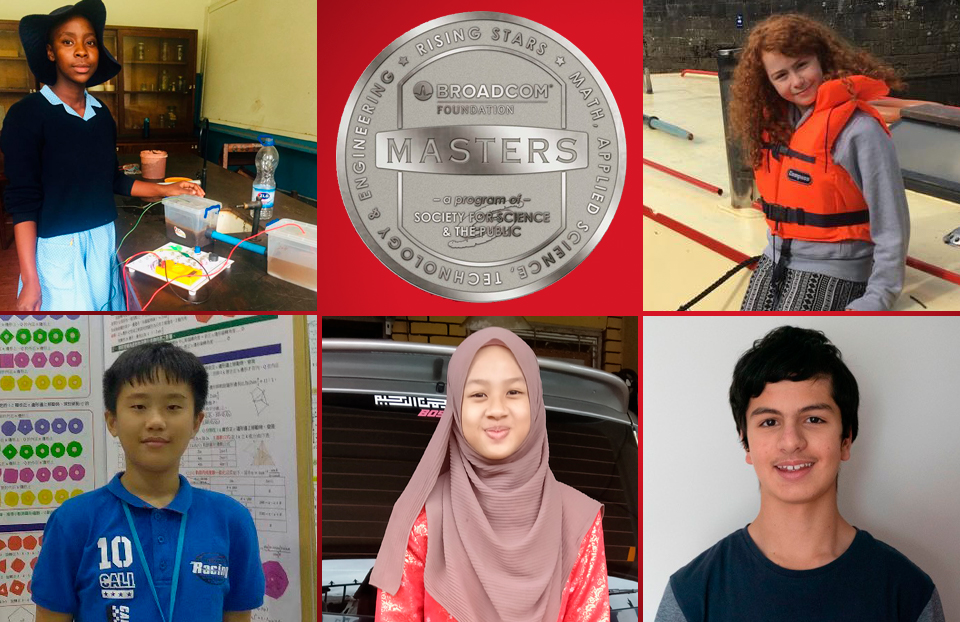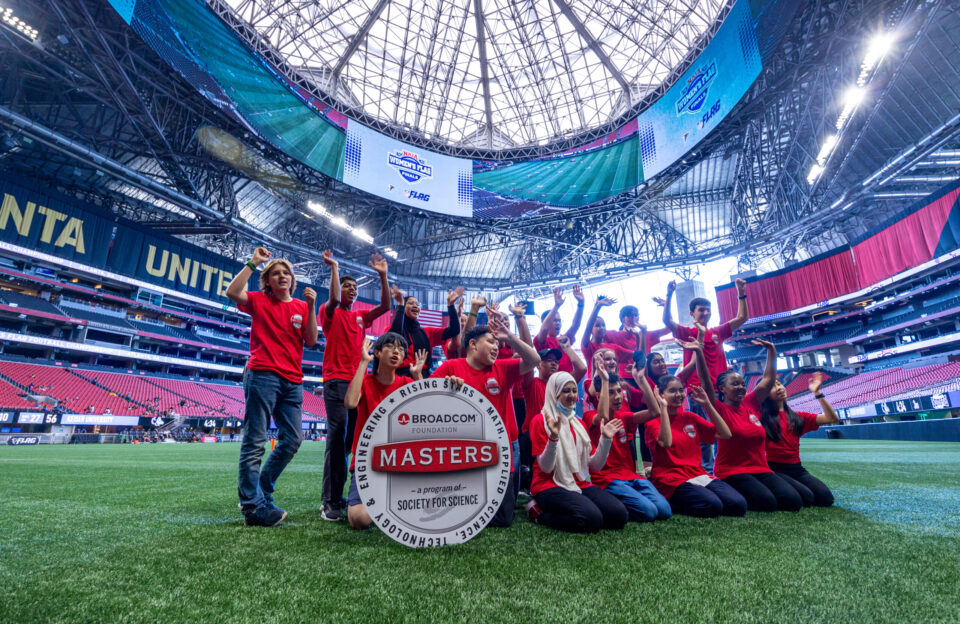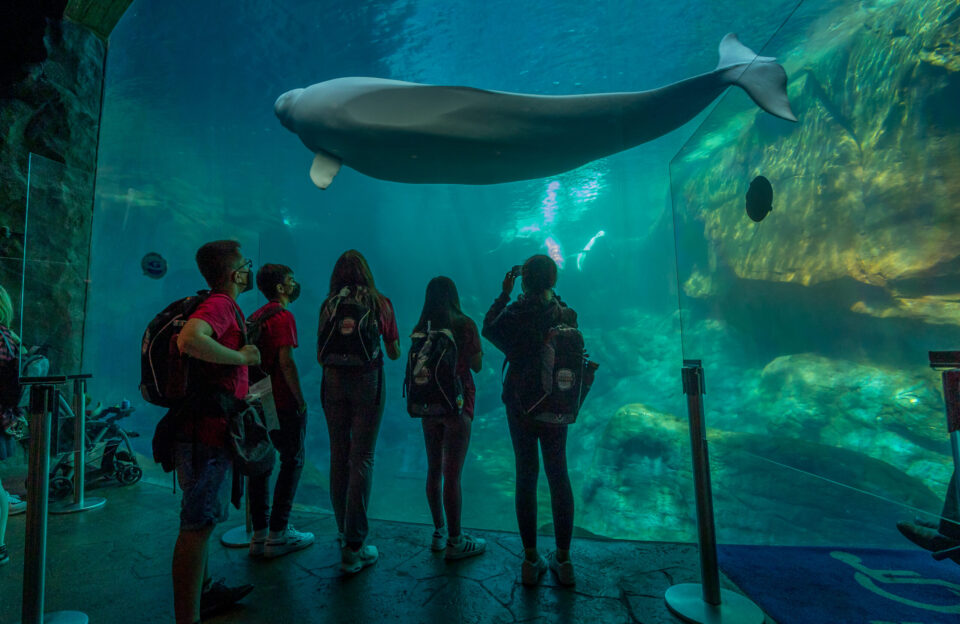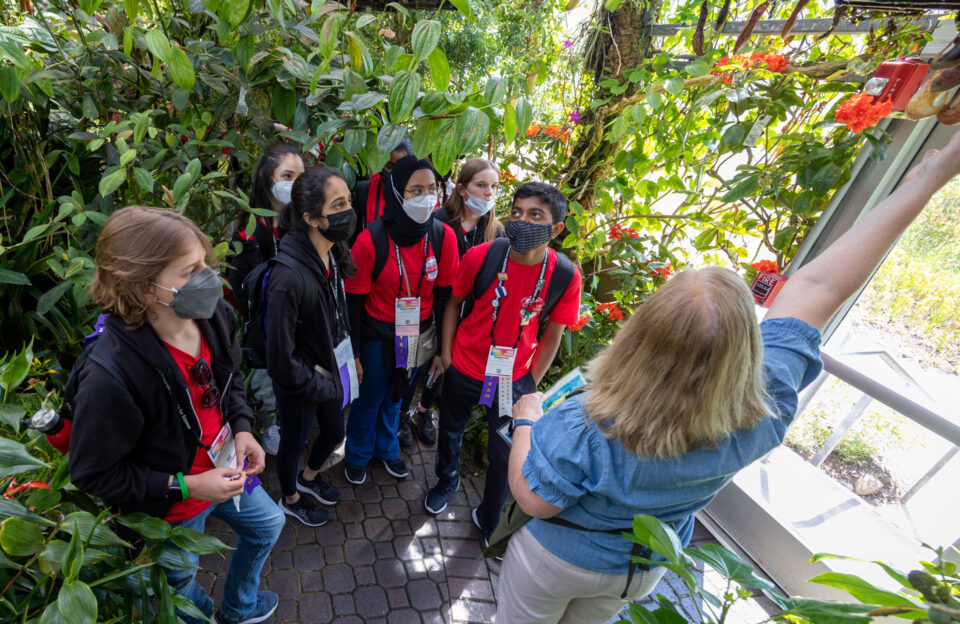Broadcom MASTERS International
BCMI: Meet 5 young scientists and engineers who want to improve the world

Whether it’s deforestation, climate change or the myriad other intractable problems facing our world, young people want to make a difference, using their critical thinking skills, creativity and heart. Meet five of this year’s Broadcom MASTERS International delegates who despite their age are driven to make a positive impact on human life and the planet using STEM. Read on to learn more about their research, home countries and diverse interests.
Rionach Hackett, 13
Northern Ireland
Broadcom MASTERS International delegate Rionach Hackett has used her time sheltering in place to explore new hobbies, including teaching herself French. She’s also writing a novel and taking voice lessons. Along with these artistic endeavors, Rionach tells the Society that she’s helping her “dad build vegetable beds in our garden and helping to start a compost bin!”
Advocating for the planet and its inhabitants and educating her family and community about environmentally-sound practices is important to Rionach, as demonstrated by her research project. She collaborated with a few friends to build an Eco-Powered Dollhouse, which she says was “designed to educate young children about renewable energy through play. It includes fully functioning solar panels, a windmill and a well, among other features which promote an eco-friendly lifestyle.” She adds, “We chose to create this as young children need to know more about renewable energy and combating environmental issues such as climate change.”
Kai-Hsuan Hsu, 14
Taiwan
Kai-Hsuan Hsu, this year’s delegate from Taiwan, tells the Society that his school has been in session during the pandemic because the virus has been well contained in his country. Still, students and faculty are asked to wear masks and socially distance in class as a precaution.
Through his studies, Kai-Hsuan has discovered his curiosity for science and mathematics. In fact, his research project is focused on math. “The objective of my project is to observe what shape would be created by rotating a point by layering two different shapes. I discovered an easier version of this experiment from a math book, and wondered what would happen when things were more difficult, which is why I did this project. I like to try several ways to approach different problems.” Evidently, Kai-Hsuan doesn’t shy away from challenges and says that he “hopes to contribute to society by applying science to life and in doing so, improve the world.”
Ruvarashe Moyo, 14
Zimbabwe
Ruvarashe Moyo, says that electric power cuts ─ known as load shedding ─ across her home of Zimbabwe last between 10-15 hours a day. In order to create electricity, Zimbabweans use firewood. Although it is the is cheapest and easiest alternative, the use of firewood has led to damaging consequences, such as deforestation and soil erosion. According to Ruvarashe, “Children in rural areas are missing many hours of school going to look for firewood. Even without the power cuts about 63% of the population do not have access to electricity.” Ruvarashe thinks the answer to Zimbabwe and the world’s global energy crisis could lie in the electricity produced using bacteria. Ruvarashe explains that in her research project she “used bacteria to create electrical power by oxidizing simple compounds in wastewater. The electrons and protons released travel through an external circuit producing electricity.” Her ultimate goal is to give every family in her country and beyond clean, eco-friendly and accessible alternative energy sources.
While Ruvarashe believes that “science is the only way young people can change the world,” she also has an appreciation for the cultural traditions, beliefs and heritage she grew up with in Zimbabwe. One cultural tradition she shared with the Society is a musical instrument called a mbira, which is “believed to chase away harmful spirits and cures sickness. The mbira is used in all celebrations such as weddings, installation of new chiefs and honoring the dead. Also, we believe in totemism, a system of belief in which humans are said to have kinship or mystical relationships with a spirit-being, such as a plant or animal.”
Akira Naumovski, 14
Australia
Since he was a little boy, Akira Naumovski has always been intrigued by computers and working with his hands to build things. In his project, Akira devised a gadget he calls a “Do-It-Yourself Facial Recognition System,” using a Raspberry Pi, a television, a camera and other pieces of hardware and software. The system was integrated into a smart mirror, which he then tested on 17 different people. Akira explains that he did this “by training the system to recognize the participants’ faces through taking photos” of them at various angles and with a hat on. “I then increased the number of photos of each participant and examined whether the number of photos stored in the system affected how well the system could recognize the person while they were performing one of the expressions or wearing the hat.” Facial recognition systems hold many applications, including identification at a gym or apartment building.
When he learns about the latest in technology, Akira imagines how he might one day invent something to make an impact too. “In particular, I like Apple and how they shift the global paradigm from time to time.” Akira tells the Society that if Steve Jobs were still alive, he would have enjoyed a “casual chat with him about the world, artificial intelligence, transportation and design principles.”
Puteri Intan Sofiyah, 14
Malaysia
In her research project, Malaysia delegate, Puteri Intan Sofiyah, aimed to harvest alternative energy using piezoelectric sensors or discs, a widely adopted technique to convert mechanical energy to electrical energy. Puteri explains, “Normally, we can produce energy from wind, water or solar, but in my project, I harvested energy from piezo discs.” Puteri shares a key way piezo discs are used in Malaysia: the discs are placed under the roads where vehicles drive across. The pressure exerted from automobiles on that pavement “generate free energy from the natural and habitual action of the vehicles and people.” The energy harvested from the system is then deposited into a storage device and can be used when needed.
Similarly, in her project, Puteri says she used buzzers to harvest energy “because in a buzzer, there is a piezoelectric disc which emits sound when we supply electricity to it. However, when I reverse the piezoelectric process, the disc can generate electricity.” She hopes that her science might contribute to the overall lowering of utility bills and make the planet greener.
Puteri tells the Society that one of the characteristics she loves most about Malaysia is the diversity of
her nation, which includes three main ethnic groups, including Malays, Chinese and Indian, each having their own customs and traditions. One of her favorite Malaysian breakfasts is a hot plate of roti canai, “a flour dough that has been kneaded and shaped into a pancake and eaten with curry or peanut sauce!”


